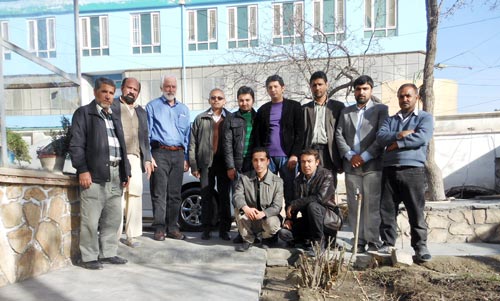International Conservation Agriculture Forum in Yinchuan
The International Conservation Agriculture Forum, held at the Ningxia Academy of Agriculture and Forestry Sciences in Yinchuan during 27-31 May, was attended by a significant number of provincial government officials and private sector representatives who joined to discuss national and international partnerships in farming system intensification, mechanization, nutrient-use efficiency, precision agriculture, and training; gain better understanding of what conservation agriculture is; jointly identify needs, priorities, and constraints to broad adoption of conservation agriculture in China; and explore the Cropping Systems Intensification Project for North Asia (CSINA).
Key academic leaders from across China briefed the international participants, including Bruno Gerard, Ivan Ortiz-Monasterio, M.L. Jat, Scott Justice, Dan Jeffers, and Garry Rosewarne from CIMMYT, Wang Guanglin from ACIAR, and Rabi Raisaily, international liaison for Haofeng Machinery. Some key constraints to adoption of conservation agriculture were covered, including the lack of financial, political, and personal incentives; inadequate or unavailable zero-till machinery; inflexible irrigation-water distribution and fixed pricing; narrow approach to research, development, and engineering without linkages to the larger issues of farming and cropping systems; and limited knowledge of rural socioeconomic conditions. Consequently, the participants defined future priorities: a socioeconomic study covering labor, gender, impacts of previous projects, and adoption issues; and mechanization development and plant residue trade-offs and handling, especially of rice/wheat systems.
One of the most important outcomes of the forum was the establishment of new relationships with the China Agricultural University, Nanjing Agricultural University, Sichuan Academy of Agricultural Sciences, the Northwest Agricultural and Forestry University, and others. Similarly, invigorating of old partnerships with the Shandong Academy of Agricultural Sciences and the Gansu Academy of Agricultural Sciences is expected to be highly beneficial for future research platform development.
As partnerships with machinery manufacturers are often crucial in driving the uptake of conservation agriculture by creating a push demand for conservation agriculture machinery, the presence of private sector representatives, including the Henan Haofeng Machinery Manufacturing Company (Henan province), Qingdao Peanut Machinery Company (Shandong province), Jingxin Agricultural Machinery (Sichuan province), and the International Plant Nutrition Institute (IPNI), was crucial. The importance of such partnerships has been proven before; for example, the research and development activities of the Qingdao Peanut Machinery Company have seen a considerable advancement of the Chinese Turbo Happy Seeder, which has been downsized through a number of iterations to suit tractors with less than 30 hp. Thanks to this public-private interaction, the forum participants learned about preliminary discussions to prototype the two-wheel tractor Happy Seeder specifically for Africa and joint CIMMYT/ACIAR projects. “We are hopeful that one of the companies present at the forum will take up this opportunity to create demand for conservation agriculture machinery for the small landholder,” said CIMMYT senior cropping systems scientist Allen McHugh.
The forum, jointly organized by the Ningxia Provincial Government Foreign Experts Bureau, Ningxia Academy of Agricultural and Forestry Sciences, and CIMMYT, was regarded very successful, as it has advanced CIMMYT’s stakes in future funding requests. “Overall, we have had a very good start toward the development of integrated research platforms in three distinct agro-ecological zones. The next step is to consolidate the outcomes from the forum and commence the iterative process of project development,” McHugh added, summarizing the results of the event.
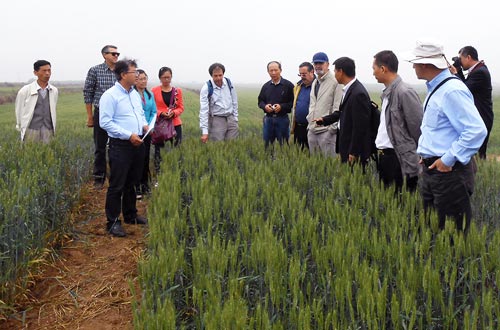 The past few weeks have been busy and interesting in China: preparing for the International Conservation Agriculture Forum in Yinchuan and work travels to Beijing, Yangling (Shaanxi province), and Xuchang (Henan province) are a sure way to keep oneself occupied.
The past few weeks have been busy and interesting in China: preparing for the International Conservation Agriculture Forum in Yinchuan and work travels to Beijing, Yangling (Shaanxi province), and Xuchang (Henan province) are a sure way to keep oneself occupied.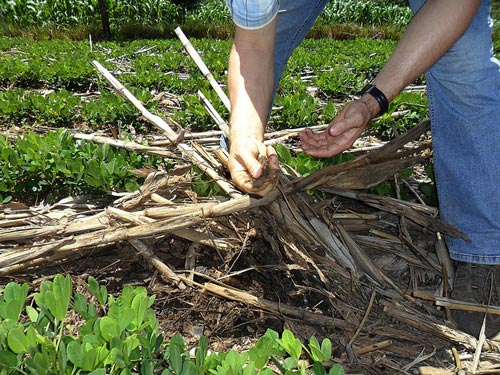 After months of discussions and debates on the scientific evidence regarding conservation agriculture for small-scale, resource-poor farmers in Sub-Saharan Africa and South Asia, a group of 40 scientists reached a consensus on the goals of conservation agriculture and the research necessary to reach these goals. The discussions leading to the signing of the
After months of discussions and debates on the scientific evidence regarding conservation agriculture for small-scale, resource-poor farmers in Sub-Saharan Africa and South Asia, a group of 40 scientists reached a consensus on the goals of conservation agriculture and the research necessary to reach these goals. The discussions leading to the signing of the 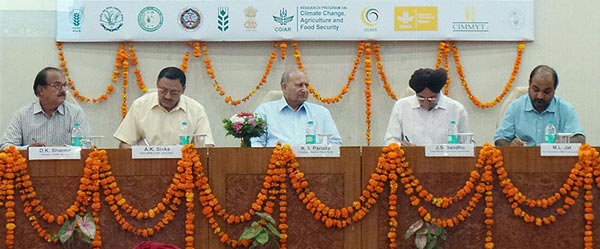
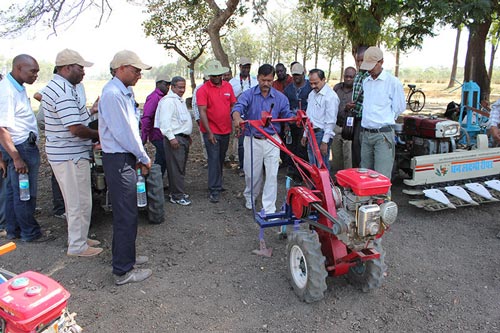 From 29 April to 10 May, 16 agricultural engineers, agronomists, machinery importers, and machinery manufacturers from Ethiopia, Kenya, Tanzania, and Zimbabwe took part in a study tour in India organized by CIMMYT, the Indian Council of Agricultural Research (
From 29 April to 10 May, 16 agricultural engineers, agronomists, machinery importers, and machinery manufacturers from Ethiopia, Kenya, Tanzania, and Zimbabwe took part in a study tour in India organized by CIMMYT, the Indian Council of Agricultural Research (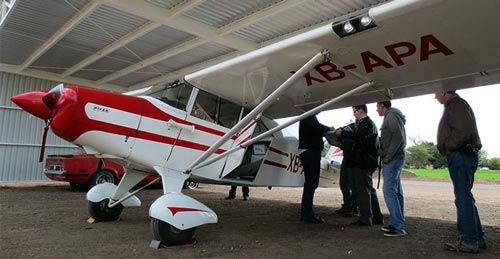
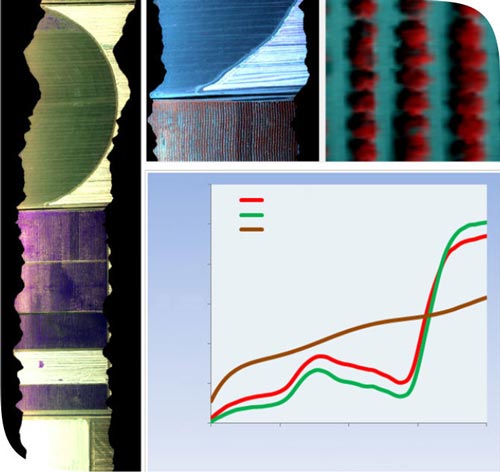
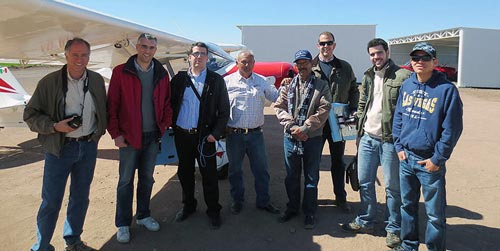
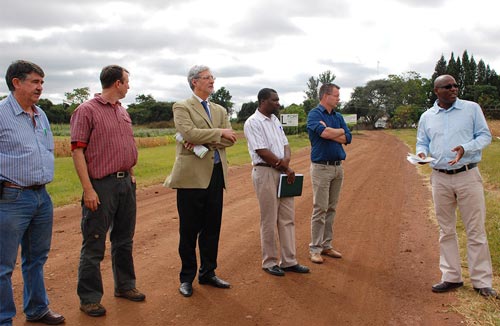
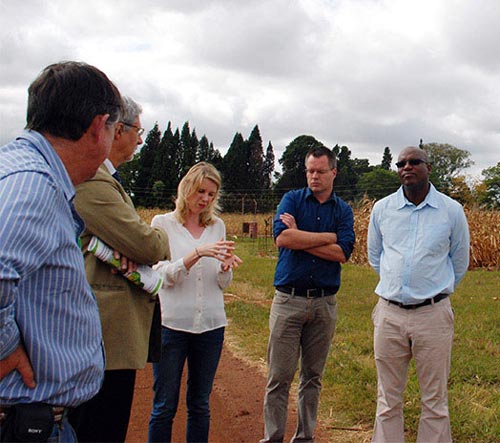
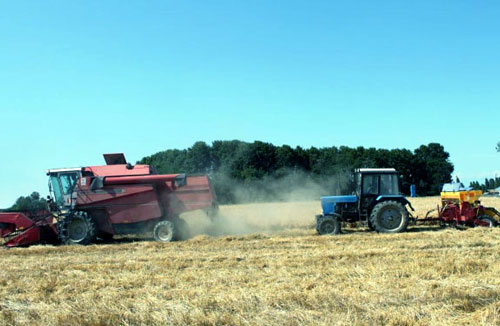 Conservation agriculture methods enable producers to sustainably intensify production, improve soil health, and minimize or avoid negative externalities. However, these practices have not yet taken off in most Central Asian countries. The
Conservation agriculture methods enable producers to sustainably intensify production, improve soil health, and minimize or avoid negative externalities. However, these practices have not yet taken off in most Central Asian countries. The 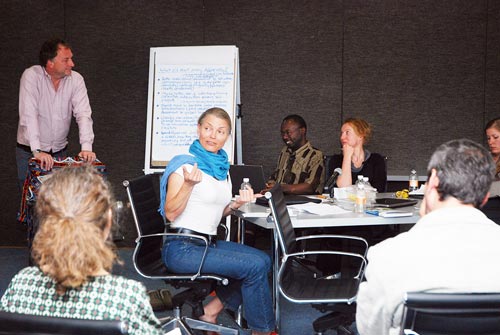 On daily basis, we interact with farmers, extension workers, researchers, seed companies, government officials, and many others. Our work would not be possible without these actors, many of whom focus on bringing new products, new processes, new policies, and new forms of organization into economic use. In their attempts to bring about change in agriculture, these multiple stakeholders are all part of what may be seen as agricultural innovation systems (AIS). However, CIMMYT’s engagement with AIS and its role within innovation platforms was not discussed more closely until recently. To review CIMMYT’s role and current approach to the AIS framework, summarize what has been done, and touch upon future plans,
On daily basis, we interact with farmers, extension workers, researchers, seed companies, government officials, and many others. Our work would not be possible without these actors, many of whom focus on bringing new products, new processes, new policies, and new forms of organization into economic use. In their attempts to bring about change in agriculture, these multiple stakeholders are all part of what may be seen as agricultural innovation systems (AIS). However, CIMMYT’s engagement with AIS and its role within innovation platforms was not discussed more closely until recently. To review CIMMYT’s role and current approach to the AIS framework, summarize what has been done, and touch upon future plans, 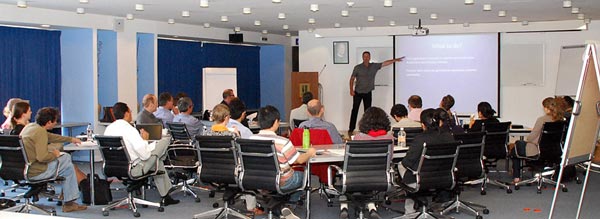
 Over 200 researchers, policy makers, donors, seed companies, and NGO representatives from Africa and Australia gathered in Chimoio, Mozambique, during 17-23 March 2013 for the third
Over 200 researchers, policy makers, donors, seed companies, and NGO representatives from Africa and Australia gathered in Chimoio, Mozambique, during 17-23 March 2013 for the third 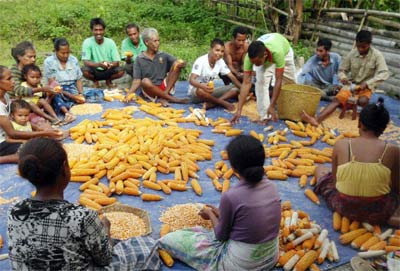
 On 13 March 2013, a social learning exercise was organized jointly by Birsa Agricultural University (
On 13 March 2013, a social learning exercise was organized jointly by Birsa Agricultural University (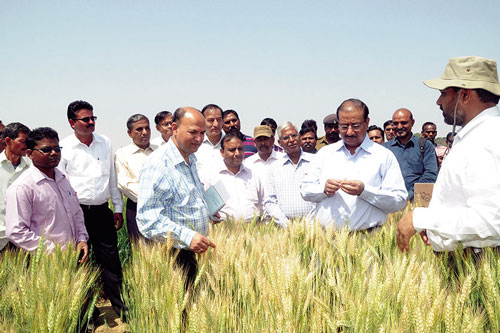 The project aims to conduct farmer participatory trials to eventually achieve mass adoption in the villages of Jharkhand. As the awareness of the project’s successes increases, so does the demand for CA technology. “Local machine manufacturers are encouraged to come forward to assemble and fabricate CA machines adapted to local farmers’ needs,” AK Singh reassured the participants. Further assurance on efficient dissemination of the knowledge and technology among farmers was provided by Chaudhary: “SAMETI utilizes a strong grassroots network of ATMA at district and block levels.” Recognizing the potential of CIMMYT and its dedication to the case, Chaudhary expressed his wish to work more closely with CIMMYT: “With your expertise, we could more efficiently train district and block levels agricultural official s and extension agents, and thus contribute towards state level extension mechanism enrichment.”
The project aims to conduct farmer participatory trials to eventually achieve mass adoption in the villages of Jharkhand. As the awareness of the project’s successes increases, so does the demand for CA technology. “Local machine manufacturers are encouraged to come forward to assemble and fabricate CA machines adapted to local farmers’ needs,” AK Singh reassured the participants. Further assurance on efficient dissemination of the knowledge and technology among farmers was provided by Chaudhary: “SAMETI utilizes a strong grassroots network of ATMA at district and block levels.” Recognizing the potential of CIMMYT and its dedication to the case, Chaudhary expressed his wish to work more closely with CIMMYT: “With your expertise, we could more efficiently train district and block levels agricultural official s and extension agents, and thus contribute towards state level extension mechanism enrichment.”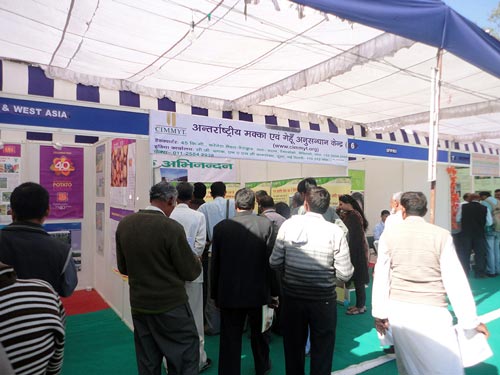 Pusa Krishi Vigyan Mela, a farmers’ fair organized by the Indian Agricultural Research Institute (
Pusa Krishi Vigyan Mela, a farmers’ fair organized by the Indian Agricultural Research Institute (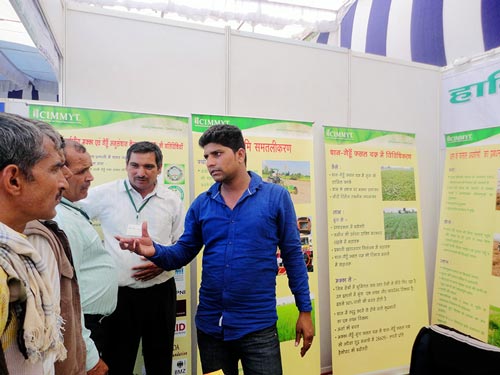 The socioeconomics team of CIMMYT India (Mamta Mehar and Subash Ghimire) also joined the fair to interact with farmers and learn about their perspectives on new technologies and farming-related constraints. Although the farmers came from different states, they mentioned having several common problems: the unavailability of quality seeds and other input on time, weather uncertainty, unpredictability of rainfall, and temperature variability. Farmers from Haryana and Rajasthan also talked about increasing pollution, degrading soil quality, and emergence of new type of insects and pests for which they would like to seek solutions. They were concerned about limited access to knowledge and low awareness on new technologies, especially those that help to manage climate change related risks. The socioeconomics team also learned that farmers are aware that using more than the advised amount of fertilizers and pesticides may harm the soil, but they do so anyways because they are afraid of the appearance of insects, pests, etc. as a result of unforeseen weather changes.
The socioeconomics team of CIMMYT India (Mamta Mehar and Subash Ghimire) also joined the fair to interact with farmers and learn about their perspectives on new technologies and farming-related constraints. Although the farmers came from different states, they mentioned having several common problems: the unavailability of quality seeds and other input on time, weather uncertainty, unpredictability of rainfall, and temperature variability. Farmers from Haryana and Rajasthan also talked about increasing pollution, degrading soil quality, and emergence of new type of insects and pests for which they would like to seek solutions. They were concerned about limited access to knowledge and low awareness on new technologies, especially those that help to manage climate change related risks. The socioeconomics team also learned that farmers are aware that using more than the advised amount of fertilizers and pesticides may harm the soil, but they do so anyways because they are afraid of the appearance of insects, pests, etc. as a result of unforeseen weather changes.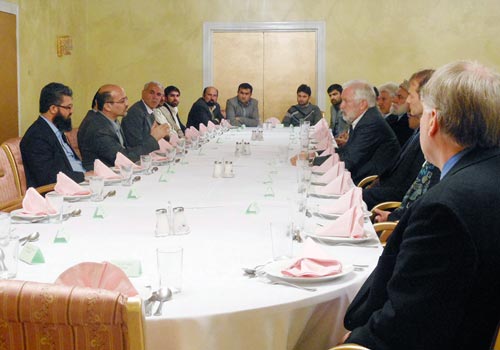 For over 10 years, CIMMYT has been working assiduously with the national agriculture research system of Afghanistan to contribute to the war-torn country’s sustainable agricultural growth and research and development. So far, the joint efforts have led to the release of 12 wheat, 4 maize, and 2 barley varieties. As wheat and maize together account for about 84% of cereal acreage and production in Afghanistan, the work continues. During 5-7 March 2013, CIMMYT director general Thomas Lumpkin visited Afghanistan to observe CIMMYT activities and initiate a dialogue on further cooperation.
For over 10 years, CIMMYT has been working assiduously with the national agriculture research system of Afghanistan to contribute to the war-torn country’s sustainable agricultural growth and research and development. So far, the joint efforts have led to the release of 12 wheat, 4 maize, and 2 barley varieties. As wheat and maize together account for about 84% of cereal acreage and production in Afghanistan, the work continues. During 5-7 March 2013, CIMMYT director general Thomas Lumpkin visited Afghanistan to observe CIMMYT activities and initiate a dialogue on further cooperation.